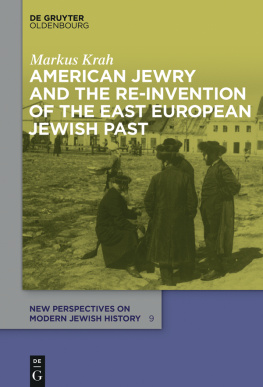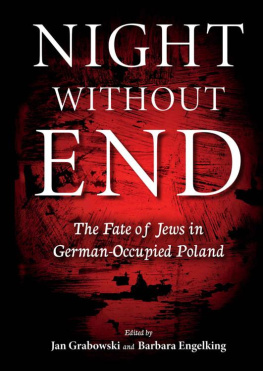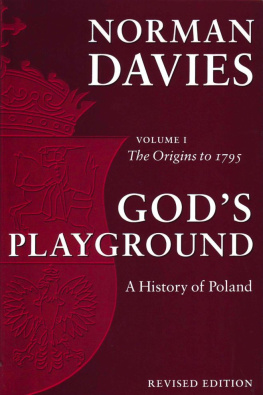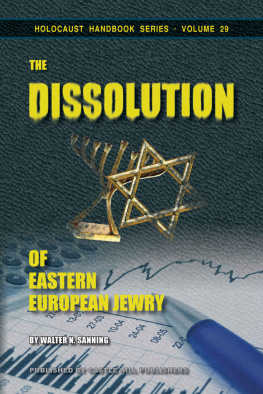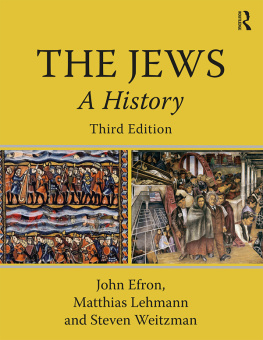Heiko Haumann
A History
f
East European
-Jews
A HISTORY OF EAST EUROPEAN JEWS
This page intentionally left blank
A HISTORY OF EAST EUROPEAN JEWS
by
Heiko Haumann

Central European University Press Budapest New York 2002 by Heiko Haumann Translation by James Patterson
First published in German as Geschichte der Ostjuden by Deutsche Taschenbuch Verlag GmbH & Co. KG, Mttnchen, in 1990
Second German edition published in 1998
English edition published in 2002 by Central European University Press
An imprint of the Central European University Share Company Nador utca 11, H-1015 Budapest, Hungary Tel: +36-1-327-3138 or 327-3000 Fax: +36-1-327-3183 E-mail :
400 West 59th Street, New York NY 10019, USA Tel: +1-212-547-6932 Fax: +1-212-548-4607 E-mail :
Translated by James Patterson
The photos included derive from a private collection. Photographer and date are both unknown. The photos can be dated at the time between the turn of the century and World War One.
All rights reserved. No part of this publication may be reproduced, stored in a retrieval system, or transmitted, in any form or by any means, without the permission of the Publisher.
ISBN 963 9241 37 7 Cloth ISBN 963 9241 26 1 Paperback
Library of Congress Cataloging-in-Publication Data
Haumann, Heiko, 1945-[Geschichte der Ostjuden. English] A History of East European Jews / by Heiko Haumann. p. cm.
Includes bibliographical references (p.) and index ISBN - ISBN
1. Jews-Europe, Eastern-History. 2. Europe, Eastern-History. 3. Europe, Eastern-Ethnic relations. 1. Title DS135.E8 H3813 2002 947' .004924-dc21
2002000999
Printed in Hungary by Akaprint
Dedicated to Gottfried Schramm
TABLE OF CONTENTS
PART II. EAST EUROPEAN JEWRY AS A 'CULTURAL
The 'Shtetl' 58 Contacts between Jews and Non-Jews: Jewish Peddlers and
Jews in the Partitions of Poland 68 The Reaction of the Jews to the New Political, Intellectual,
PART III. THE CRISIS OF THE JEWS IN EASTERN EUROPE A NEW IDENTITY
Luftmenshn 109 Transformation of the Occupational Structure and New
Competition to Oust Rivals from the Market and Anti- 117 Semitism
A Positive Model with Contradictions: Hungary 190 Different Attitudes to the Emancipation of the Jews in
PART IV. ATTEMPTED ANNIHILATION AND NEW
The Jews in the Russian Revolution and in the Soviet Union 207 East European Jewish Nationality and New Waves of Anti-Semitism: The Jews in Poland between the Two World
A Precarious Situation in Individual East European 228 Countries
The Attempted Extermination of the Jews 233 The Jews in Postwar Poland: New Suffering and New Hope 239
Bibliography to Part I: Poland as a Place of Refuge for Jews 266 Bibliography to Part II: The East European Jewry as a 'New
Cultural Pattern of Life' in Eastern Europe 266 Bibliography to Part III: The Crisis of the Jews in Eastern
Europe a New Identity 267 Bibliography to Part IV: Attempted Annihilation and New
Hope 269
INDEX 271
This page intentionally left blank
LIST OF MAPS
AUTHOR'S PREFACE
"I am an East European Jew [Ostjude], and our homeland lies wherever we have our dead." So speaks the millionaire Henry Bloomfield in Joseph Roth's novel Hotel Savoy as he visits the grave of his father, Jechiel Blumenfeld. This sentence encompasses the entire history of the 'East European Jews' (sometimes referred to simply as Ostjuden ). They are not simply 'the Jews in Eastern Europe'although they developed there as a characteristic typebecause they are scattered throughout the world. They have left behind their dead in many countries. Often, memory remained their only homeland.
One of the roots of this remembering lies in the region in which the East European Jews originated in the eighteenth century and took shape in the nineteenth: old Poland. As a result, the history of Polish East European Jewsunder different forms of governance after the Partitions of Poland between 1772 and 1815stands at the center of my account. It is in relation to this that the history of the Jews in Eastern Europe as a whole is concisely and comparatively sketched: the prehistory of East European Jewry, its spread throughout the region, and its encounters with West European Jewry. In this way, its characteristic features and the structures of everyday life emerge more clearly. An account of the circumstances in emigration would have been beyond the scope of this volume. The fate of the East
European Jews in the twentieth century is likewise merely outlined. Knowledge of this topic can be readily assumed.
This book is intended as an introduction, the purpose of which is to reinforce remembrance of the history and way of life of the East European Jewswhich are part of our own history . For English-language readers, many studies are available, at different levels of specialization, about the history of the Jews, and in particular of those who lived in central and eastern Europe. But there is still no general account of this kind. In addition, my studies have concentrated on the specific role of the Jews in the region as intermediaries between different strata of society and different economic structures. I present the development and change of this role across the centuries, albeit in mere outline. To this end, I describe cultural and religious issues in parallel with social and economic ones, without claiming to do more than summarize the results of work done by others. My goal was to arouse curiosity, and to stimulate more detailed engagement with the theme. In order to make this often 'alien' world more vivid, I also use literary sources, even when the poetic license taken in their creation means that they are rather indirect reflections of reality.
Some parts of this book may sound elementary and even superfluous to many readers. However, the basic characteristics of Jewish religion and family life (such as the bar-mitzvah, the rites of the Sabbath, and so on) are essentially unknown to most of the present generation of Germans. At the same time, in Britain and America, especially in the metropolitan areas, these are fairly well known, and many a Gentile will have attended an occasion of this kind. Authors who write about the Jewish life of the past, such as Isaac Bashevis Singer, are also much more likely to be known to English readers than to Germans. The presence in New York, London, or Toronto of observing Orthodox Jews, speaking Yiddish and retaining much of the
ways of life of their places of originthat is, eastern Europe makes the subject-matter of this book much less 'exotic' there than for readers in post-Shoah Germany and Austria. The author apologizes to those who feel 'patronized' by these explanations; they are welcome to skip them.
A word of explanation concerning the German word Ostjuden which I chose to retain: it is a notion that would be poorly reflected in the plain geographical term 'East European Jews'. (Moreover, the concept of eastern Europe is very differently understood in, for example, Britain or the USA, and elsewhere.) A more precise explanation of this notion will be found in part two of this book.
Finally, a note on personal and place names, particularly on the territory of the historical Polish-Lithuanian Commonwealth. It is normal in German books to call the capital of Silesiain Polish Wroclawby its German name Breslau, as German burghers have done for centuries. However, the modern reader would not be able to find Breslau in a contemporary atlas. In order to avoid any connotation of political revanchism, to which people in the region are understandably sensitive, in this book the place names (and occasionally Slavic or other personal names) are given in the form presently used and represented on up-to-date maps or in the relevant scholarly literature. For clarity's sake, when names first appear in the text, I have added other well-known variants in parentheses.
Next page



